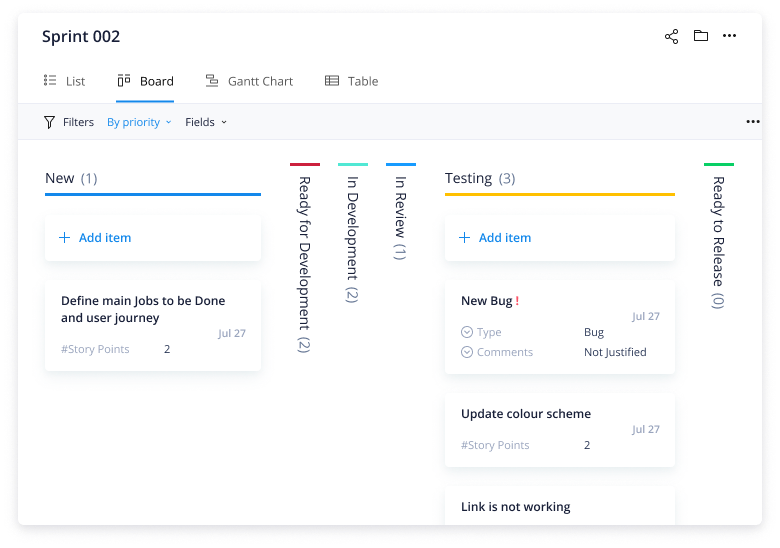What Is a Spike Story in Agile?
A spike story in Agile is a user story that needs more information so the team can estimate how long the story will take to complete. Agile teams typically have a set amount of time outlined for spikes, which is why spike stories are often referred to as timeboxed investigations.
Sometimes spike stories in Agile can be investigated in less time than the timebox, and sometimes spikes need more time than has been allotted. In this case, team members need to report the outcome of their investigation to the rest of the team, even if they will need more time to finish the investigation.
Those familiar with Agile project management already know it’s all about finding effective ways to quickly overcome challenges and improve inefficiencies. That’s why spike stories fit in so well with this methodology. If you’re new to Agile, a spike story might sound like a puzzling concept — but it’s good to understand them as they play a crucial role in helping teams explore uncertainties and make informed decisions.
Let’s dive deeper into spike stories, explaining their purpose and types, how they differ from user stories, and how to write your own.
Prefer to jump right into action? Unlock your free Wrike trial now to explore our customizable Agile teamwork template and take full control of your sprints.
Spike stories explained
Part of the Agile methodology is the idea that user feedback should aid in the process of software development. Customer feedback should, therefore, inform much of the work an Agile team undertakes, from tracking and fixing bugs to improving the user experience. A user story, therefore, is a small unit of work in an Agile workflow that was prompted by user feedback.
However, what happens when the solution to a user story isn’t immediately clear? Teams might need to spend a period of time researching or breaking the story into smaller parts. That time spent preparing to work on the story is called a spike story, and the time is allocated by the product owner ahead of the sprint.
Types of Agile spikes
Spikes in Agile address uncertainties that a team encounters during a project.
Agile spikes can generally be categorized into two types: technical and functional. Each serves a specific purpose for Agile teams:
- Technical spike: This type of spike happens when there’s a need to reduce risk associated with technical challenges. A technical spike may involve experimenting with different techniques to determine the best path forward. It’s useful for situations with high uncertainty about the technical feasibility of a product backlog item.
- Functional spike: These spikes are used to understand business requirements or clarify complex functionality. They help in story estimation by identifying and sizing requirements. A functional spike ensures that the Scrum master and development team can articulate and plan potential solutions in their upcoming sprints.
Make the most of stories and sprints
How to write a spike story
When considering how to write a spike story, it’s important to remember that spike stories should seek to answer a single, specific question, rather than multiple questions or a vague piece of information. If you need to find out more information about multiple questions, you should split the spikes to address each of these individually.
The goal of a spike story in Agile is not to determine the solution to a story, but rather to determine an estimate for how long the original story will take to complete. Spike stories might require team members to spend time splitting a story into smaller stories if the original user story is too large or complex, or it might require a team member to build an experiment to gather more information for the estimate.
Spike stories in Agile can benefit teams by enabling them to move forward with their sprints after properly estimating the time needed for completing stories, allowing the team to create more accurate user stories. Spike stories should also reduce waste and increase the team’s understanding of a user story.
What’s the difference between spike stories and user stories?
A user story in Agile is a short description of a feature told from the perspective of the end user or customer. User stories focus on the value a feature will deliver to the customer and are typically written in a simple structure:
As a [type of user], I want [some goal] so that [some reason].
These stories are central to organizing the work in Agile projects, helping teams identify and measure the work needed to add new features from a user’s perspective.
Spike stories are like user stories, but with a twist. Spikes in Agile involve exploring potential technical approaches to challenging problems that cannot be estimated or planned at first glance. Agile spikes are timeboxed, meaning they have a set limit of time allocated to them, which helps manage the scope and resources effectively.
Manage spike stories with Wrike
Spike stories are a powerful tool that Agile teams can use to quickly access the information they need. With Wrike’s prebuilt Agile template, teams can easily create and manage spike stories along with other Agile artifacts such as product backlogs.
This template can be customized to fit your team’s unique needs, providing a centralized location to submit bugs, track progress, and maximize sprints. Don’t let inefficiencies hinder your Agile workflows — sign up for Wrike today and start creating spike stories that will help your team deliver better results, faster.



